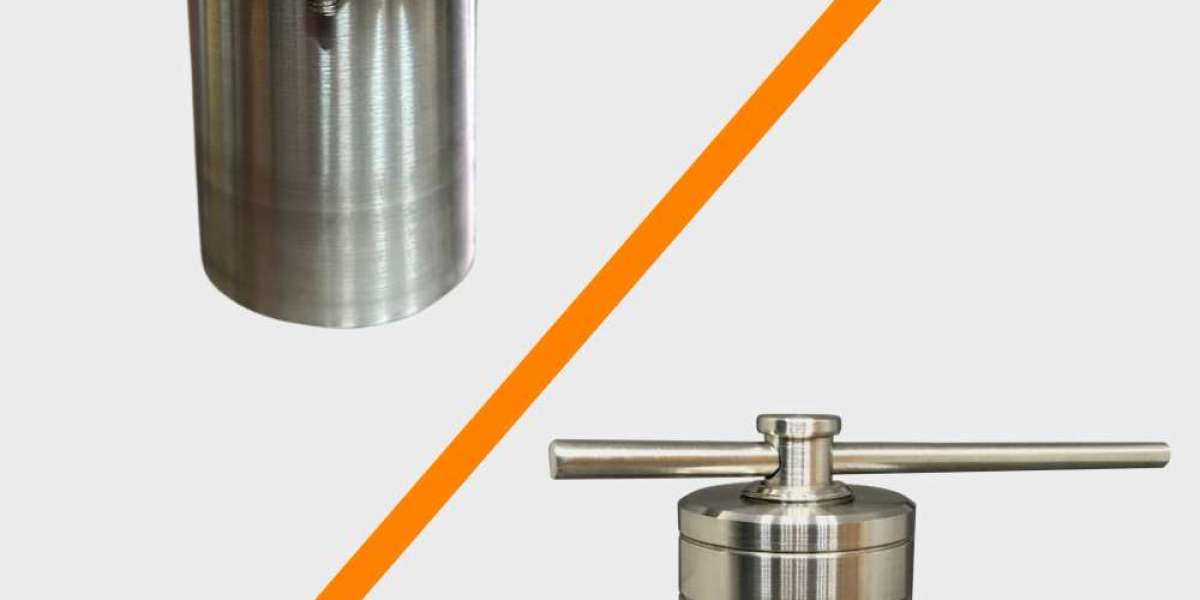The Hydrothermal autoclave with high pressure is a specific device for chemical reactions and the synthesis of materials at high temperatures and pressure conditions. The equipment is used extensively in the areas of nanotechnology and material science, chemistry as well as geology specifically for the formation of crystals, the synthesizing nanomaterials, and investigating reactions under extreme conditions.
How a Hydrothermal Autoclave Reactor Works
The hydrothermal autoclave generator creates a controlled and safe environment where water and different solvents can remain in an hypercritical condition with extreme temperatures and pressure and allow unique chemical reactions to take place that aren’t feasible under normal conditions. Here’s how it works
- Reaction vessels The heart of an autoclave is the reaction vessel, which is typically constructed of stainless steel that is resistant to corrosion as well as Teflon (PTFE) liner. This vessel houses the solvents, reactants and catalysts utilized to make the reaction.
- The High Pressure Environment The autoclave is constructed to stand up to high pressures usually between 10–100 MPa (megapascals) although some reactors are able to go further. The pressure is generated by the heat of the liquid in the vessel sealed in, which is not able to expand.
- high temperature conditions The temperature within the reactor could vary between 100degC to 300degC, or more dependent on the materials that are being treated. The heating results in the liquid becoming supercritical, which results in enhanced solubility, reactivity and diffusion properties.
- The Controlled Reaction under these conditions, substances dissolve crystallize, dissolve, and undergo chemical changes. The reactor allows exact control of the temperature and pressure, which allows scientists to modify the conditions of the reaction to produce specific substances.
Applications of Hydrothermal Autoclave Reactors
1. Synthesis of Nanomaterials
Hydrothermal syntheses are a well-known method of creating nanowires, nanoparticles and various nanostructures. The conditions of supercritical in the reactor allow for controlling the shape, size, and chemical composition of the nanoparticles that are utilized in medicine, electronics, and catalysis.
2. Crystal Growth
Autoclave reactors are utilized in the development of crystals that are single in industrial and research applications. The process of slow crystallization under high pressure permits the formation of pure excellent crystals for semiconductors, optics and many other fields.
3. Geochemical Research
Researchers studying geochemical processes employ hydrothermal autoclaves in order to simulate the conditions deep within crust of the Earth. This aids them in understanding the formation of minerals as well as weathering processes and interactions between rock and fluid in geothermal settings.
4. Synthesis of Zeolites and Other Porous Materials
Hydrothermal methods are widely used for producing zeolites — microporous materials used in catalysis, adsorption, and ion-exchange processes. The exact temp and pressure controls of the autoclave allow for the customizing of zeolite structures as well as characteristics.
Types of Hydrothermal Autoclave Reactors
There are various designs of hydrothermal reactors based on their use and the required temperature/pressure levels. The most commonly used types include:
- Lined with Teflon Autoclaves ideal for chemical reactions that involve corrosion-prone materials The autoclaves come with the PTFE coating that is impervious to a variety of chemicals.
- Stainless Steel Autoclaves Ideal for high temperatures and pressures These are more durable and can be used in industrial environments.
- Customized designs For industrial or research needs reactors can be built to handle the most extreme conditions or to use unique materials.
Operating a Hydrothermal Autoclave Safely
Due to the pressure and temperatures that are involved, safety precautions are essential when working with hydrothermal autoclaves. Here are some important safety guidelines:
- Proper sealing Check your reactor has been sealed prior to initiating reactions to avoid explosions or leaks due to pressure accumulation.
- Monitor Temperature Utilize high-quality temperature sensor systems and monitors to stay clear of overheating that could cause equipment to fail.
- Pressure Relief Valves They are vital safety devices that allow you to let off pressure in the event that it exceeds the safe operating limits.
- Personal Protective Equipment (PPE): Always wear the appropriate PPE, such as thermal gloves or face shields. Also, wear lab coats while working using autoclaves.
Conclusion
Autoclaves with high-pressure hydrothermal pressure are vital tools in numerous industrial and scientific applications. They allow for the investigation of reactions and materials under conditions that resemble natural or extreme conditions. Their capability to make superior quality nanomaterials, crystals and other complicated substances under controlled high-temperature, high-pressure conditions is a major advantage in areas which range from geochemistry to nanotechnology.








